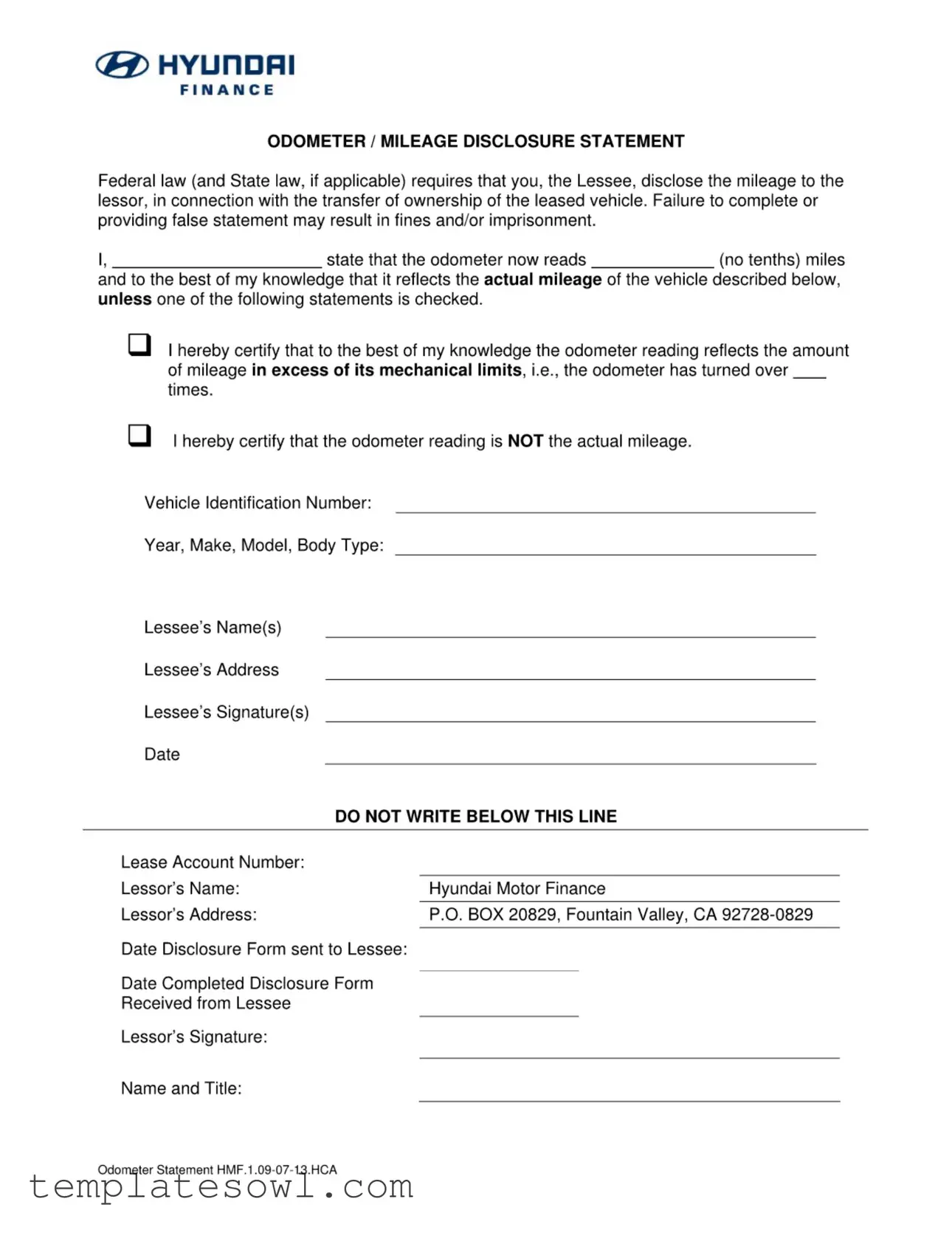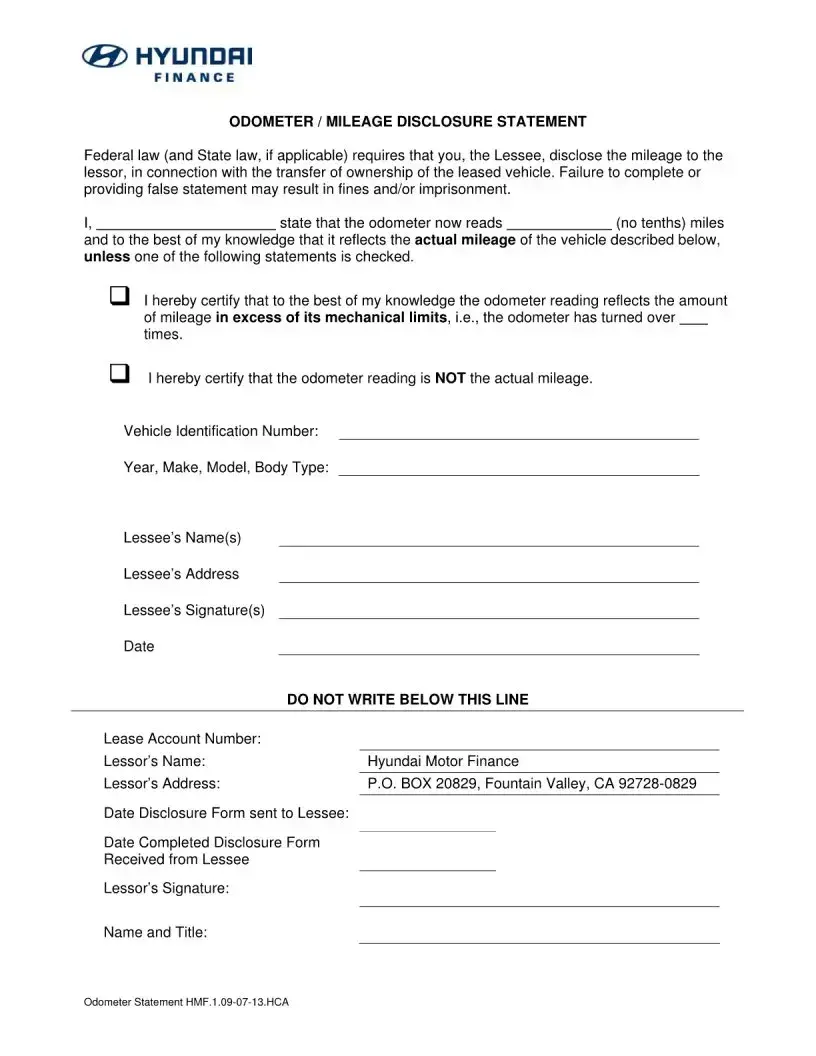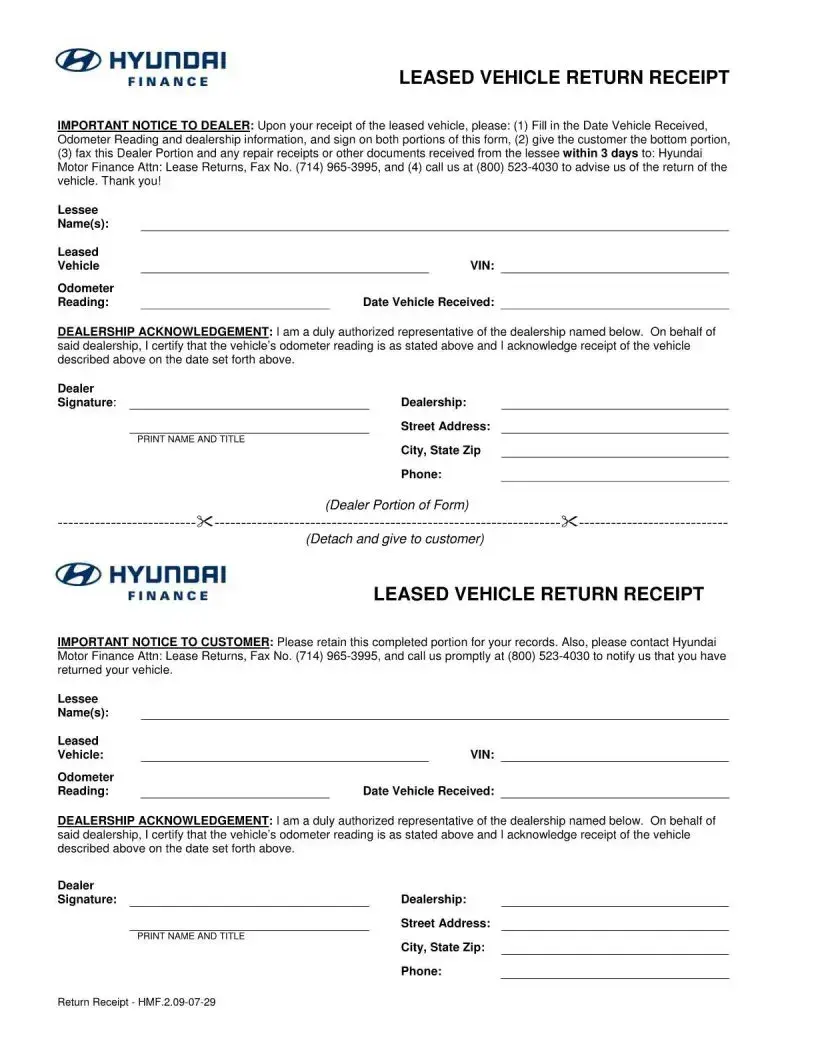Completing the Hyundai Finance Odometer Statement form requires careful attention to detail. One common mistake arises when individuals forget to include the vehicle's exact odometer reading. The statement clearly specifies that the reading must be reported in miles, without tenths. If this is overlooked, it may lead to the document being rejected.
Another error frequently encountered involves incorrect or missing vehicle identification information. The Vehicle Identification Number (VIN), along with the year, make, model, and body type of the vehicle, must be accurately filled out. An incorrect VIN can complicate the processing of the statement and potentially delay any transactions related to the vehicle.
Failure to sign and date the form is a significant oversight that can invalidate the statement. Lessees must ensure that all necessary signatures and the corresponding date are included before submission. This step is crucial, as the lack of proper signatures can lead to legal implications.
People sometimes mistakenly enter information that does not align with the odometer reading. For instance, if the odometer has turned over due to exceeding its mechanical limits, this must be accurately represented. Indicating that the odometer reading is the actual mileage while the vehicle has indeed surpassed its limits can result in legal consequences.
Inaccuracies in personal information can also create issues. Lessees must check that their names and addresses are accurately recorded. Errors in this section may not only create confusion but might also affect communication and documentation throughout the leasing process.
Another frequent mistake involves neglecting to check the appropriate boxes regarding odometer disclosure. There are specific options to indicate whether the reading reflects the actual mileage, is not the actual mileage, or if the odometer has exceeded its limits. Failing to check one of these boxes can lead to incomplete information being provided.
Submitting the document without proper acknowledgment can further complicate matters. Both the lessee and the dealer must ensure that required dealer acknowledgments are present. This step validates the information provided and confirms receipt of the vehicle.
People often overlook the guiding instructions provided with the form. Failure to follow these could lead to incorrect submissions. It is essential to review all instructions to ensure full compliance with the wording and requirements stipulated on the document.
Finally, not retaining a copy of the completed statement can lead to problems later on. Lessees should always keep a copy for their personal records. This practice protects their interests and provides documentation should any disputes arise in the future regarding the vehicle's mileage or condition.


